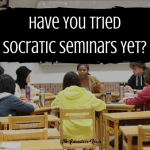Overview:
Google Doodle is a great way to build background knowledge in a way that's fun and inquisitive for students.
That letter “O” morphing on your search engine for Mother’s Day?
That spinning Globe for Earth Day?
Those jigging leprechauns for St. Patrick’s Day?
These are all the Google Doodles from 2015 to celebrate holidays.
There are also Google doodle tributes to individuals. Emmy Noether (physicist), Laura Ingalls Wilder (author), and Anna Atkins (botanist) have been featured in doodles this year (2015) as individuals whose work was celebrated as having made an impact in our lives today. Each of the doodles represents the individual artistically using elements that best represent their work.
Some of the Google doodles are interactive. The Google Doodle for Martha Graham is a 15-second celebration of dance. The Google Doodle for Robert Moog provides a miniature electronic analog Moog Synthesizer (keyboard) that the viewer can play. The tribute to journalist Nellie Bly features a YouTube video scored with an original song (Music: “Nellie” by Karen O).
There are also international tributes not seen here in the United States with Google doodles for surrealist artist Leonora Carrington (Latin America/Australia); the oldest primary grade student at 84 years old, Kimani Maruge (Kenya); and womens’ rights activist, Henrietta Edwards (Canada).

The first Google Doodle (right) was a comical message that the Google founders Larry Page and Sergey Brin were out of the office attending the Burning Man Festival. The Google Doodle Archive houses the entire collection (1998-present). A scroll through the graphics shows how Google’s primary colored logo is changed in a way that is often surprising or magical. Clicking on the Google Doodle takes the reader to a page with information about the event or person and information about the graphic design and artist for the page.
There are hundreds of doodles and information on the archive states:
Creating doodles is now the responsibility of a team of talented illlustrators (we call them doodlers) and engineers. For them, creating doodles has become a group effort to enliven the Google homepage and bring smiles to the faces of Google users around the world.
Now, consider that a key shift of the Common Core State Standards (CCSS) is to build knowledge through content-rich nonfiction. The explanation on the CCSS website is:
Students must be immersed in information about the world around them if they are to develop the strong general knowledge and vocabulary they need to become successful readers and be prepared for college, career, and life. Informational texts play an important part in building students’ content knowledge. Further, it is vital for students to have extensive opportunities to build knowledge through texts so they can learn independently.
Students at all grade levels can independently develop an interpretation of the Google Doodle graphic. After studying the logo created by Google illustrators (doodlers), teachers can determine if the link that takes students’ information on the holiday, the anniversary, or the biography is appropriate for age or grade-level reading. Each link contains general information that aligns with the CCSS shift to “build knowledge through content-rich nonfiction.” There is information on these links that might lead students to investigate the person or topic on the doodle even further.
Should a student have an idea for a Google doodle, “The doodle team is always excited to hear ideas from users – they can email proposals@google.com with ideas for the next Google doodle.” There are hundreds of suggestions daily, but the information on the website assures students that “…rest assured that we’re reading them :)”
Another opportunity for students to submit ideas for a Google Doodle (Doodle 4 Google) will be available in September 2015. The details for the 8th annual US competition will be announced then, and examples of student entry winners in 2014 are also available on the website.
A quick click on the Google Doodle can be an engaging mini-lesson for students in building background knowledge….especially when the information is offered in a logo that is dancing, leaping, morphing, twisting, falling, jumping, running, exploding, singing, growing.




